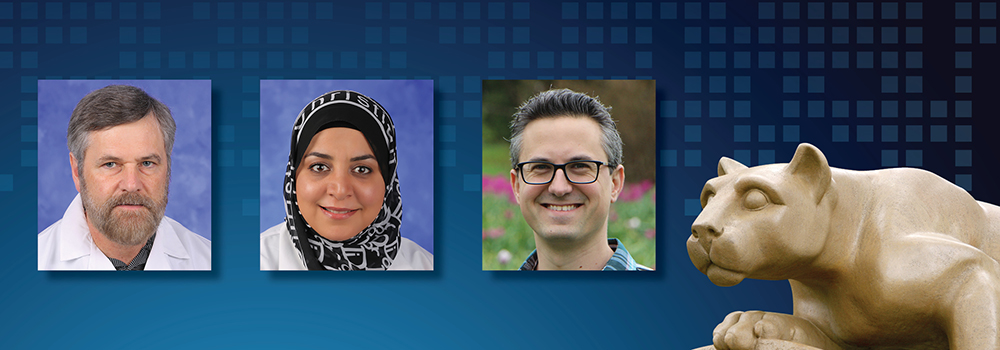College of Medicine researchers secure funds to study cellular processes, develop new treatments

Penn State College of Medicine researchers secured more than $800,000 to study the complex processes in the body’s cells. The funds may help them develop new treatments for diseases like osteoarthritis and replace diseased tendons and ligaments.
“Therapeutic targeting of GPCR Gbetagamma-GRK2 in osteoarthritis”
Investigator: Fadia Kamal, PharmD, PhD – assistant professor of orthopaedics and rehabilitation
Grant Amount: $337,260 ($1,686,300 anticipated through January 2024)
Awarded by: National Institute of Arthritis and Musculoskeletal and Skin Diseases
Goal: Osteoarthritis is a debilitating disease of the joints that involves progressive deterioration of cartilage, with no available treatment. These preclinical studies aim to discover an effective treatment for osteoarthritis, a drug that can stop or even prevent cartilage degeneration.
“The four dimensions of nucleosome chain folding”
Investigator: Sergei Grigoryev, MS, PhD – professor biochemistry and molecular biology
Grant Amount: $319,545 ($1,132,229 anticipated through July 2023)
Awarded by: National Science Foundation
Goal: As cells change – or differentiate – during growth, so does the DNA inside them. This study will use high-resolution imaging equipment to investigate the changes in DNA folding that happen when cells differentiate. Understanding these changes may help researchers better understand the difference between normal and cancerous cells.
“Studying Mechanotransduction in Late Embryonic Development to Inform Tendon Tissue Engineering”
Investigator: Spencer Szczesny, PhD – assistant professor of orthopaedics and rehabilitation and biomedical engineering
Grant Amount: $188,139 ($346,112 anticipated through June 2021)
Awarded by: National Institute of Arthritis and Musculoskeletal and Skin Diseases
Goal: Tendon and ligament injuries are a common cause of disability and pain. When the injured tissue cannot be repaired directly, it must be replaced — ideally, with a biological material grown in the lab from a patient’s cells. However, the complexities of tendon structure and organization have prevented researchers from developing suitable tissue replacements. This study seeks to better understand how tendons form naturally during embryonic development — which may help bioengineers develop materials that can successfully replace diseased tendons and ligaments.
If you're having trouble accessing this content, or would like it in another format, please email Penn State Health Marketing & Communications.
